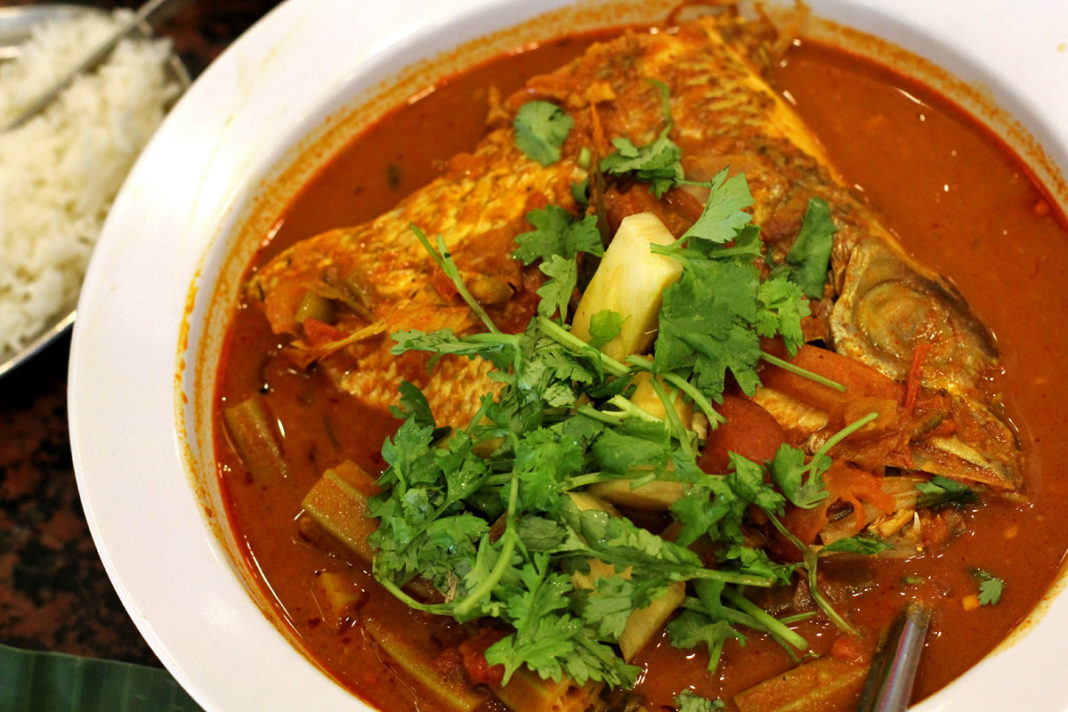1. Singapore chilli crab
Essentially fried crab smothered in spicy sweet-sour gravy, this dish, concocted in the 1950s, inspires national pride in Singaporeans.
The original featured a gravy made with bottled chilli sauce, but local chef Hooi Kok Wah can be credited for popularising the version that we all know and love today.
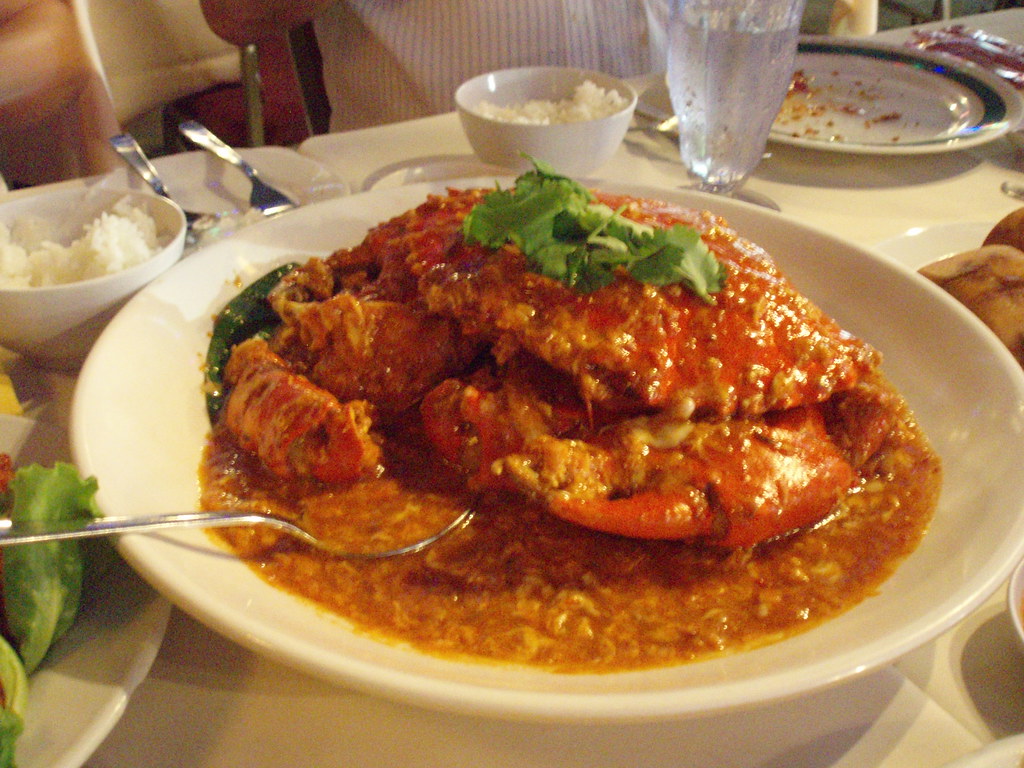 Eschewing bottled chilli sauce, Hooi used a spicy paste made from chillies, shallots, garlic, ginger, tomato paste, vinegar, lemon juice and egg white to create a thick gravy that has become the gold standard for this dish.
Eschewing bottled chilli sauce, Hooi used a spicy paste made from chillies, shallots, garlic, ginger, tomato paste, vinegar, lemon juice and egg white to create a thick gravy that has become the gold standard for this dish.
Singapore chilli crab is usually served with mantou (Chinese steamed buns) to sop up that delicious gravy.
2. Udang balado
Udang balado hails from Indonesia’s West Sumatra province, home to the Minangkabau people, known for their matrilineal society and fiery cuisine.
Lado, meaning “chilli” in the Minang dialect, is the chief ingredient that lends this prawn dish its name and a spicy punch.
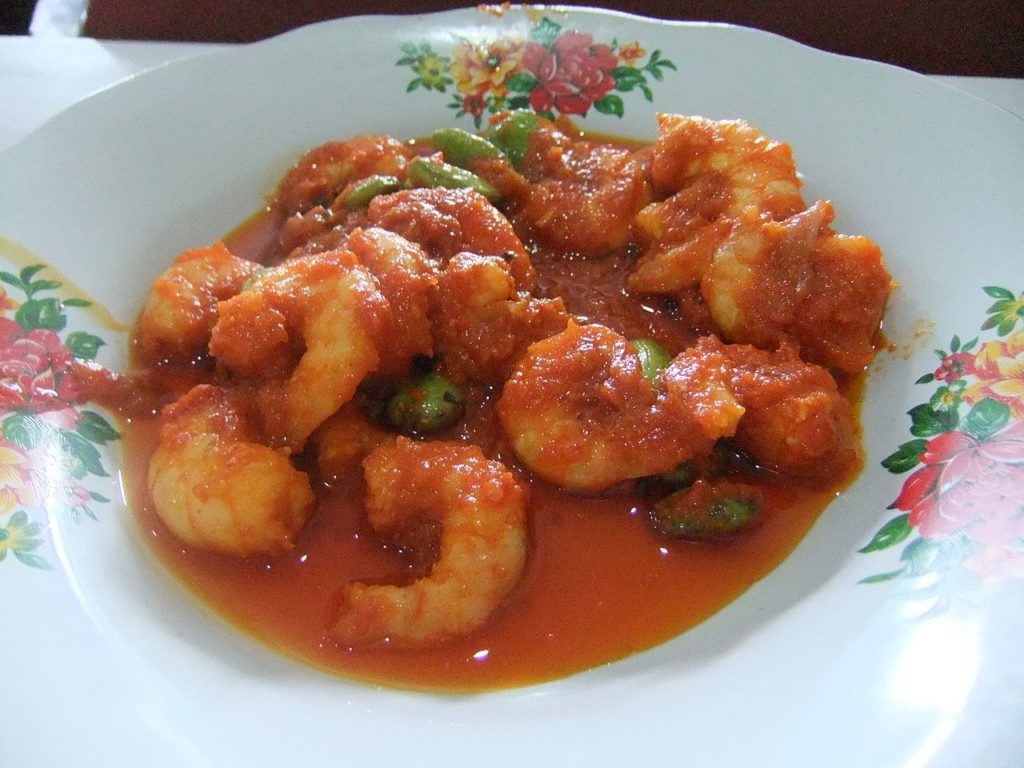 To make the dish, a spice paste is prepared by pounding red chillies, shallots, garlic and tomato with a pestle and mortar.
To make the dish, a spice paste is prepared by pounding red chillies, shallots, garlic and tomato with a pestle and mortar.
The paste is then stir-fried in bit of oil until fragrant before the prawns are tossed in. A pinch of sugar is added to temper the heat, and some versions may include shrimp paste and lemongrass for added flavour.
3. Amok trei
Cooked in fragrant banana leaf parcels, this Khmer steamed fish curry with royal origins stands out for its creamy, mousse-like texture.
At the heart of this fish dish is kroeung, a spice paste that consists of lemongrass, galangal, turmeric, kaffir lime leaves, garlic, shallots and dried red chillies.
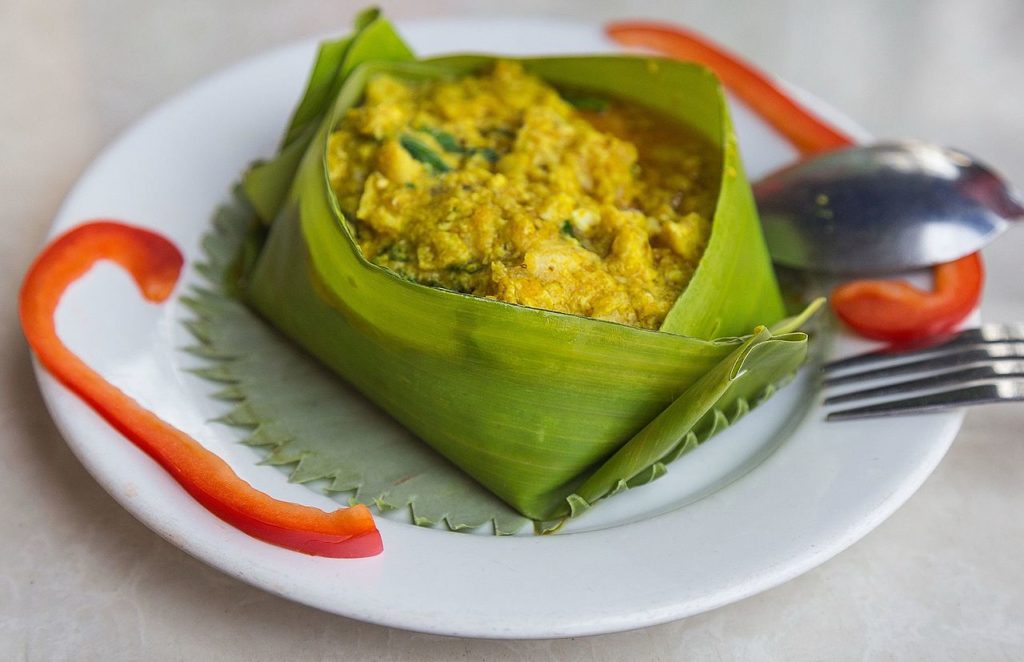 To make this dish, kroeung is mixed with coconut milk, fish sauce, palm sugar and beaten eggs, then poured over the fish before the entire mixture is steamed.
To make this dish, kroeung is mixed with coconut milk, fish sauce, palm sugar and beaten eggs, then poured over the fish before the entire mixture is steamed.
Goby, snakehead or catfish fillets are traditionally used, but these can be substituted with any white fish.
4. Asam pedas ikan
Also believed to have originated from the Minangkabau culinary repertoire, this spicy-sour fish stew is beloved in Indonesia, Malaysia and Singapore.
 This dish gets its sour tang from asam jawa or tamarind, and spicy hit from plenty of dried red chillies that are blended with aromatics like shallots, ginger, garlic and galangal.
This dish gets its sour tang from asam jawa or tamarind, and spicy hit from plenty of dried red chillies that are blended with aromatics like shallots, ginger, garlic and galangal.
In Malaysia, Melaka state is famed for its asam pedas, which usually features stingray or jenahak (snapper) in a tangy gravy with ladies’ fingers, tomatoes, brinjal and Vietnamese mint.
Interestingly, Melaka’s Peranakan Chinese community often uses pineapple chunks and shrimp paste in their take on asam pedas ikan.
5. Mien luon
Instead of a bowl of cereal, the breakfast of champions in Vietnam’s capital, Hanoi, is mien luon or eel noodle soup.
This rustic soup, said to originate in Hanoi’s rural outskirts, features slithery con luon (swamp eel) – seasoned with salt, black pepper, fish sauce and grated ginger and fried – and cellophane noodles, typically made from arrowroot flour.
 The hearty broth combines eel head and bones – these are simmered in water and then crushed and added to the broth – pork bones and ginger.
The hearty broth combines eel head and bones – these are simmered in water and then crushed and added to the broth – pork bones and ginger.
The broth is ladled over blanched noodles, topped with curls of fried eel, scallions, Vietnamese mint and cracked black pepper, and served with nuoc cham, a fish sauce-based condiment.
6. Keropok lekor
Sometimes referred to as fish sausages, keropok lekor is a twice-cooked snack that originates from Terengganu in Malaysia, where fishing is a major industry.
In this East Coast state of peninsular Malaysia, common catches like ikan parang (wolf herring) and ikan kembung (Indian mackerel) are transformed into chewy fried fish fingers as a means to preserve food.
 Keropok lekor is prepared by combining deboned and ground or pounded fish with sago flour and water to make a pliable dough. The dough is then rolled into batons, cooked in boiling water and sun-dried.
Keropok lekor is prepared by combining deboned and ground or pounded fish with sago flour and water to make a pliable dough. The dough is then rolled into batons, cooked in boiling water and sun-dried.
Once perfectly crisp, the batons can be kept until they’re needed, at which point they are deep-fried and served with locally made chilli sauce.
7. Fish head curry
The brainchild of restaurateur M J Gomez, an immigrant from India’s Kerala state, fish head curry was introduced to Singaporeans in 1949.
As the story goes, Gomez chose to make his fish curry, a staple in his homeland, with fish head as this was prized by the island’s majority Chinese community.
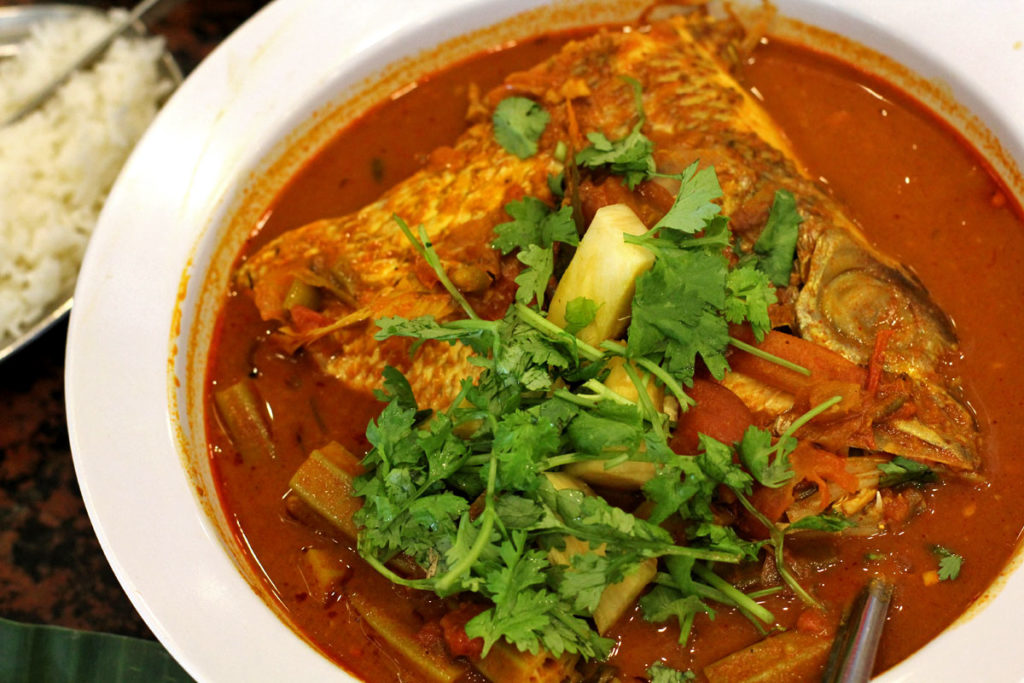 The dish, redolent with spices like turmeric, fenugreek, coriander, cumin and curry powder, proved to be a hit and was later reproduced, with a few tweaks, by Chinese restaurants across the island.
The dish, redolent with spices like turmeric, fenugreek, coriander, cumin and curry powder, proved to be a hit and was later reproduced, with a few tweaks, by Chinese restaurants across the island.
Gomez’s creation was so renowned in Singapore that in the 1970s and 1980s, local restaurants often advertised their offering as Gomez Fish Head Curry or Original Gomez Curry to entice customers.
Today, fish head curry is savoured not only in its native Singapore but also across the Causeway in Malaysia.
According to airasia.com




